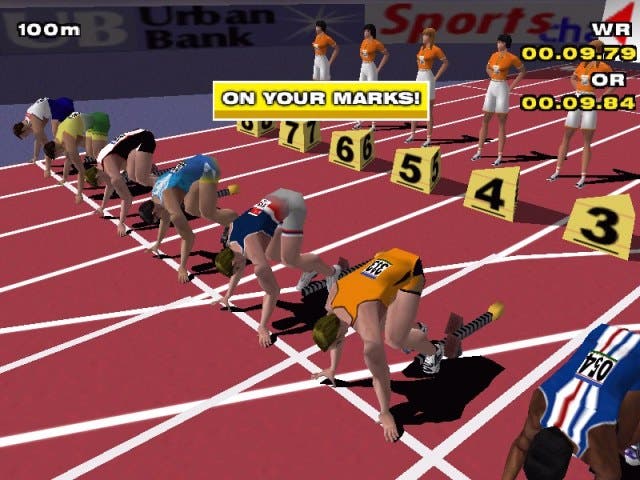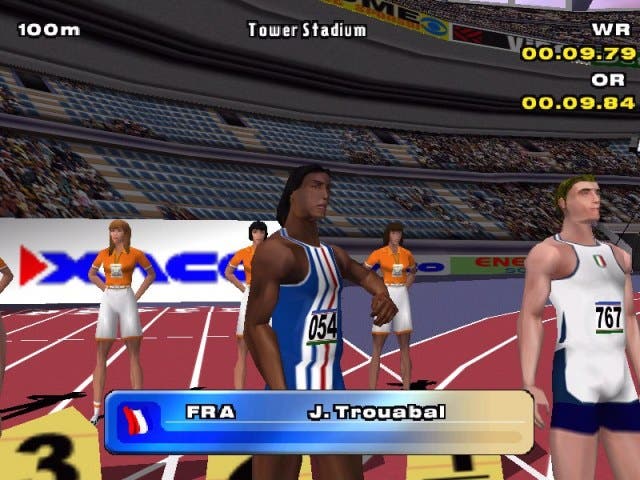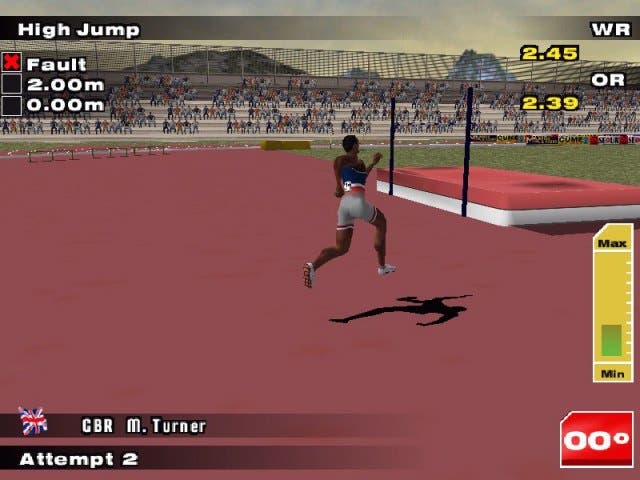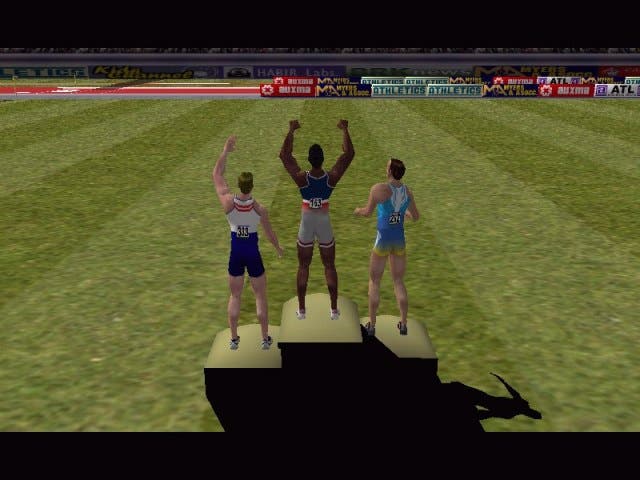Sergei Bubka's Millennium Games
Athletics game reviewed

Introduction
It has been an absolute age since I have played a "track and field" style game on a home computer, with my last memory being "Hypersports" on the Spectrum 48k!
Even with today's swanky new arcade games, with their technical wizardry and complex gameplay, I will still seek out the good old joystick bashing of "Track and Field". It has always been such simplistic fun, and curiously addictive, and it usually only costs 10p too!
Athletics games on the PC have been few and far between though, but with the Sydney 2000 Olympics almost here, the inevitable influx of titles is upon us. Midas' Millennium Games is endorsed by none other than Ukranian born Sergei Bubka, World and Olympic record holder in the Pole Vault. With modern 3D graphics technology to further back the game up, my expectations were high as I dusted off my running shoes, and headed for the track...

Let The Games Begin
Things begin nicely with a dramatic introductory video sequence, followed by an in-game graphics camera sweep through one of the stadiums, giving you a glimpse of things to come.
The game can be played in two or three different ways, the Team Arcade mode being the one that you will more than likely get stuck into. In here you take control of an entire team of athletes spanning across nineteen events and a variety of nations.
Progression through this mode is a little frustrating, as in every event you have to qualify to compete against the other countries. Oddly enough though, each of the qualifying events is played out on your own, without any computer opponents. This makes for a bit of a shock when you come up against some of the tougher athletes, and consequently you can be beaten easily.
There seems to be a very strange skill gap between some of the track events as well, where you will find yourself strolling to an easy victory in the 110m hurdles only to be left standing in 400m relay. I suppose that is real life, but it makes for some pretty impossible targets to beat at times. I would have liked for the game to have flowed a little more evenly, with all the events played out in competitive succession. Having to qualify for the events, in particular the longer races like the 5000m and above, is rather laborious.
Thankfully there is an option to play all of the events in any order, but this really only serves as a practice mode. For the real enthusiasts there is also the Decathletic simulation - basically a management simulation for athletics, allowing you to make managerial decisions, customise training schedules and so on.

My Poor Keyboard!
Those of you fearing for the life of your keyboards need not fret - Midas have incorporated a clever mouse control system, as well as the traditional battering of the keyboard method.
In mouse mode you have a circle beneath your athlete with an arrow with a red and green band around the circle perimeter. When the green band passes the arrow, pressing the action key will cause your power to increase, and red to decrease. I found that the mouse system, whilst being very easy to operate, made it extremely difficult to attain enough power to challenge for the gold medals though, let alone any of the world records. In the end I dropped it in favour of the keys - I knew I would find a use for my old IBM keyboard one day!
Every event involves a frantic toggling of the left and right keys to keep the athlete's momentum going. The only events that lessen this wrist aching exercise are the 1500m and above. Obviously bashing your keyboard for a 1500m race would be ludicrous, so these events use a far more leisurely endurance versus exertion method.
Competition events such as the 4x 100m relay are still all done with the key bashing method, and when coupled with the qualifying session this becomes a quite literally tiring experience. Both the jumping and throwing events can sometimes be extremely fussy in their execution too.

Graphics and Sound
Graphically the game impresses, with the stadiums looking splendid in their colour and realism. There are brilliant touches like the big jumbotron screens showing a smaller image of what you are seeing in the main screen, creating a cool TV coverage type of feel. Another nice touch are the little time monitors dotted around the track, displaying the current event and your time as you sprint on past.
The athletes look and act superbly, with the attention to detail quite brilliant in places. For example, limbering up for the high jump is amazingly captured, and the track racers preparations for an event are also accurately depicted. Strange then that the worst animation is in the running itself, never quite convincing you of speed, and looking like someone's holding a naked flame under their bums!
Sound is adequate, never really impressing, but not so bad as to cause irritation. Spot effects range from the rhythmic claps of the crowd as you prepare for a high, long or triple jump, to the grunts of exertion in the throwing events, but all of the athletes make the same noises as each other, with just one set each for male and female participants. A bit more effort channelled into the sound department wouldn't have gone amiss.

Conclusion
Millennium Games is certainly good entertainment, with great graphics and enough variety to keep you coming back for more. The controls can be extremely unfair, making it nigh on impossible to catch up with the computer players at times, and the fussy nature of the throwing and jumping events will infuriate.
The inclusion of a two-player split-screen mode is a huge bonus though, and plays surprisingly well. LAN play is also supported for up to eight players, only make sure you warn the neighbours in advance! I would have liked to have seen a few more events thrown in, but I guess that is just the Hypersports addict in me.
Not bad at all - go decimate your keyboard now!
